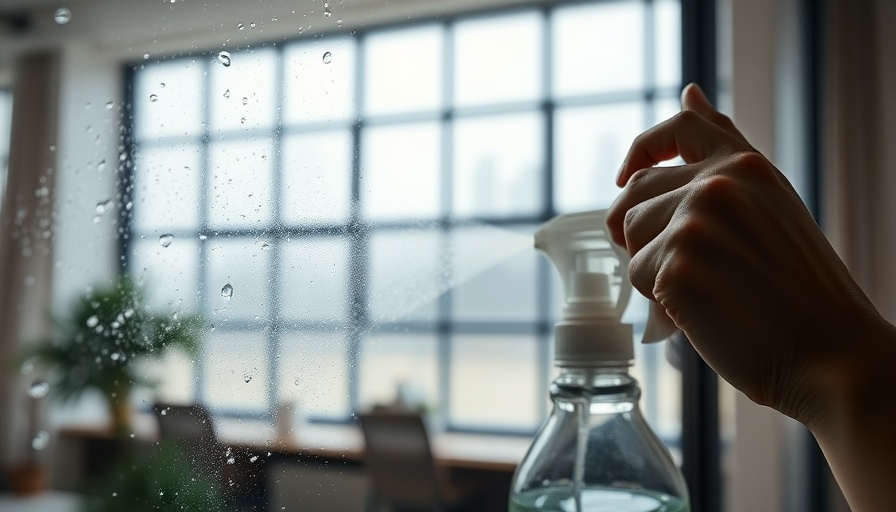
Understanding the Importance of Disinfecting Your Home After the Flu
Disinfecting your home after a flu infection is more than just an act of cleanliness; it plays a critical role in safeguarding your family and guests from illness. The flu virus can linger on surfaces for up to 48 hours, meaning a thorough cleaning is essential after anyone in the household has been sick. Whether you're recovering from the flu or simply want to maintain a healthy environment, knowing how to effectively disinfect your home can minimize the spread of germs and protect your loved ones.
Cleaning vs. Disinfecting: What You Need to Know
A common misconception is that cleaning and disinfecting are interchangeable. Cleaning involves scrubbing surfaces free of dirt and germs, primarily using soap and water. Disinfecting, however, uses specific chemical agents to kill germs on surfaces. Therefore, to ensure your home is safe from lingering flu viruses, start by cleaning commonly trafficked areas and follow up with a disinfection routine.
Targeting High-Traffic Areas in Your Home
Certain areas of your home are hot spots for germs, especially during flu season. Focus on these high-contact surfaces:
- Doorknobs and handles
- Light switches and stair rails
- Drawer handles and car controls
Cleaning and disinfecting these areas can significantly reduce the chances of spreading the virus, especially in shared spaces. Don't forget about your vehicle; steering wheels, seat belts, and navigation screens also require attention if someone was sick while in the car.
Tools of the Trade: Which Disinfectants Work Best?
When it comes to disinfecting, the right tools can make a significant difference. Disinfecting wipes are among the easiest and most convenient options available. However, it's crucial to follow the instructions on the label for the most effective use. Some common household disinfectants include:
- Bleach solutions
- Alcohol-based sprays with at least 70% alcohol
- Commercial disinfectant wipes
These products help ensure that invisible germs are eradicated from surfaces, particularly in places where large families or groups of friends congregate.
The Emotional Impact of Illness in the Family
Experiencing flu in the household can bring emotional stress and anxiety about the potential spread of illness. Ensuring the home is disinfected can help alleviate some of those fears, providing peace of mind for everyone involved. Knowing you have taken steps to safeguard your home reassures family members that they can return to their normal routines without the looming worry of falling ill again.
Future Predictions: A Healthier Home Environment
As we continue to learn about viruses and their persistence on surfaces, our approaches to home hygiene will undoubtedly evolve. Incorporating regular disinfecting habits into your routine, even when no one is sick, can be a preventative measure against various illnesses. Perhaps in the near future, advancements in disinfecting technologies will provide even safer and more effective solutions, keeping our homes healthier than ever.
Conclusion: Empowering Healthy Choices
Taking the time to clean and disinfect your home after the flu is a proactive step towards encouraging a healthier environment for all who enter. Regularly engaging in these practices not only protects against flu but also instills a culture of health awareness within families and communities. Let's embrace a common goal: a safe, clean living space that promotes well-being.
For more insights on health and wellness, join our community for more tips and strategies that can improve your lifestyle and keep your home healthy!
 Add Row
Add Row  Add
Add 



Write A Comment